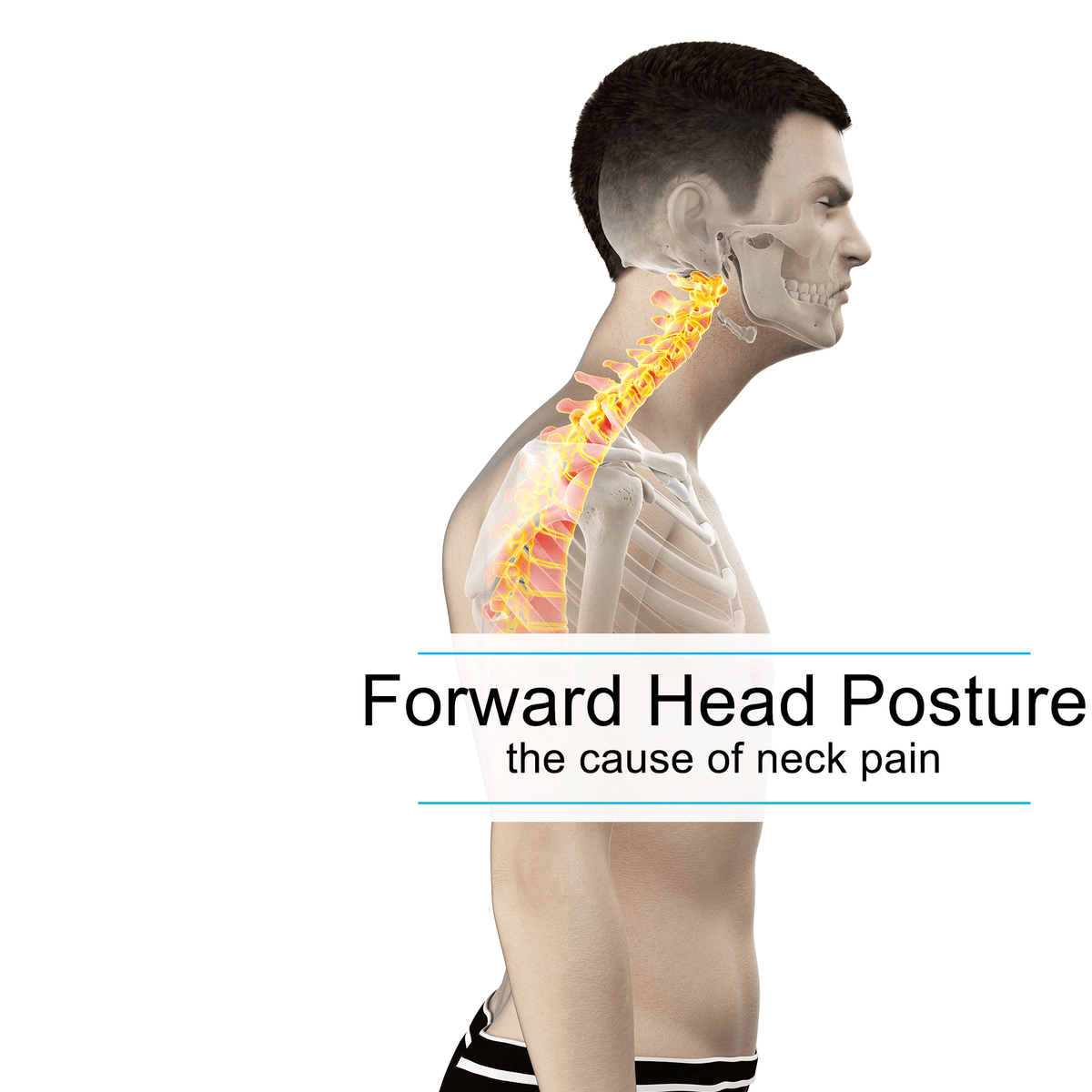
Forward Head Posture: The Cause of Neck Pain
|
|
Time to read min
|
|
Time to read min
In today's digital age, it's not uncommon to spend hours each day looking down at our phones or hunched over computers. Unfortunately, these habits can contribute to a condition known as forward head posture (FHP), which can lead to a host of musculoskeletal issues. In this comprehensive guide, we'll explore the causes, symptoms, and solutions for addressing forward head posture and promoting optimal postural alignment.
With the average adult spending 6.5 hours per day sitting and checking their phone an average of 58 times per day, forward head posture has become increasingly common. This poor habitual neck posture can result in muscle imbalance, joint dysfunction, and altered movement patterns, ultimately leading to pain and discomfort.
Forward head posture is characterized by the anterior positioning of the head relative to the shoulders, causing the chin to jut forward and the neck to extend excessively. This misalignment can place increased stress on the cervical spine, compressing tissues such as facet joints and ligaments. Additionally, weakened respiratory muscles, impaired balance, and heightened shoulder stress are common consequences of forward head posture.
Recognizing the symptoms of forward head posture is essential for addressing this condition effectively. Headaches, neck discomfort, muscle tension in the neck and shoulders, mid-back discomfort, chest pain, and numbness or tingling in the arms and hands are all common indicators of forward head posture. By paying attention to these symptoms, individuals can take proactive steps toward improving their postural alignment and reducing associated pain.
The consequences of forward head posture extend beyond musculoskeletal discomfort, impacting respiratory function, balance, and overall physical well-being. By compressing tissues in the cervical spine and weakening respiratory muscles, forward head posture can hinder proper breathing and exacerbate existing health issues. Additionally, impaired balance and increased stress on the shoulders can further compromise postural integrity and contribute to chronic pain.
Addressing forward head posture requires a multifaceted approach that incorporates postural awareness, corrective exercises, and lifestyle modifications. By identifying and addressing poor daily habits, individuals can begin to retrain their bodies and promote productive and positive postural alignment. Incorporating postural tools and exercises into daily routines can help counteract the negative effects of forward head posture and restore optimal musculoskeletal function.
Forward head posture is a common condition that can have significant implications for musculoskeletal health and overall well-being. By understanding its causes, symptoms, and consequences, individuals can take proactive steps toward improving their postural alignment and reducing associated pain and discomfort. Through a combination of postural awareness, corrective exercises, and lifestyle modifications, individuals can embrace postural health and enjoy a more pain-free and productive life. So, take charge of your posture, prioritize your well-being, and embark on the journey to optimal postural alignment with confidence and determination.